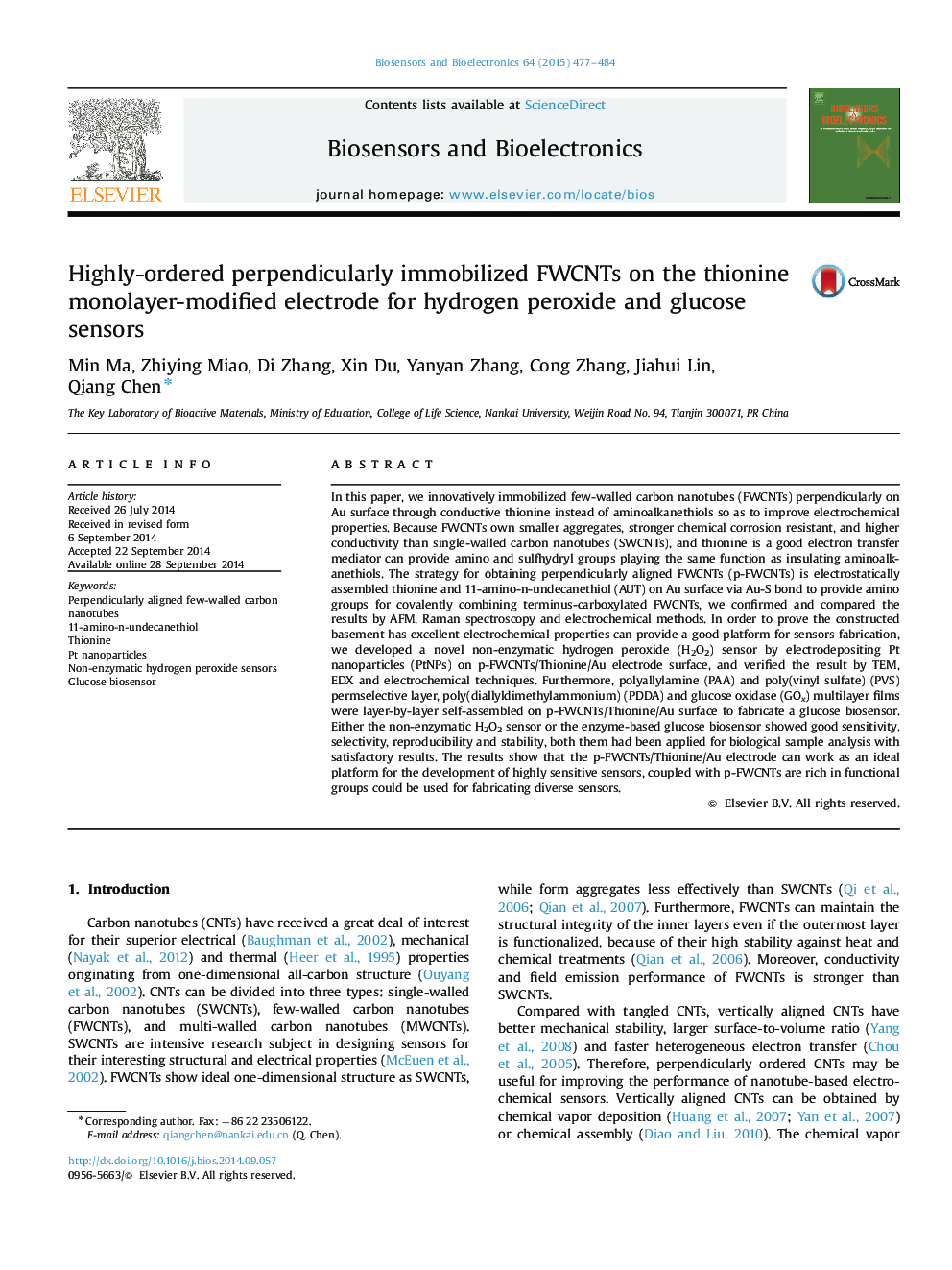| Article ID | Journal | Published Year | Pages | File Type |
|---|---|---|---|---|
| 7233046 | Biosensors and Bioelectronics | 2015 | 8 Pages |
Abstract
In this paper, we innovatively immobilized few-walled carbon nanotubes (FWCNTs) perpendicularly on Au surface through conductive thionine instead of aminoalkanethiols so as to improve electrochemical properties. Because FWCNTs own smaller aggregates, stronger chemical corrosion resistant, and higher conductivity than single-walled carbon nanotubes (SWCNTs), and thionine is a good electron transfer mediator can provide amino and sulfhydryl groups playing the same function as insulating aminoalkanethiols. The strategy for obtaining perpendicularly aligned FWCNTs (p-FWCNTs) is electrostatically assembled thionine and 11-amino-n-undecanethiol (AUT) on Au surface via Au-S bond to provide amino groups for covalently combining terminus-carboxylated FWCNTs, we confirmed and compared the results by AFM, Raman spectroscopy and electrochemical methods. In order to prove the constructed basement has excellent electrochemical properties can provide a good platform for sensors fabrication, we developed a novel non-enzymatic hydrogen peroxide (H2O2) sensor by electrodepositing Pt nanoparticles (PtNPs) on p-FWCNTs/Thionine/Au electrode surface, and verified the result by TEM, EDX and electrochemical techniques. Furthermore, polyallylamine (PAA) and poly(vinyl sulfate) (PVS) permselective layer, poly(diallyldimethylammonium) (PDDA) and glucose oxidase (GOx) multilayer films were layer-by-layer self-assembled on p-FWCNTs/Thionine/Au surface to fabricate a glucose biosensor. Either the non-enzymatic H2O2 sensor or the enzyme-based glucose biosensor showed good sensitivity, selectivity, reproducibility and stability, both them had been applied for biological sample analysis with satisfactory results. The results show that the p-FWCNTs/Thionine/Au electrode can work as an ideal platform for the development of highly sensitive sensors, coupled with p-FWCNTs are rich in functional groups could be used for fabricating diverse sensors.
Related Topics
Physical Sciences and Engineering
Chemistry
Analytical Chemistry
Authors
Min Ma, Zhiying Miao, Di Zhang, Xin Du, Yanyan Zhang, Cong Zhang, Jiahui Lin, Qiang Chen,
